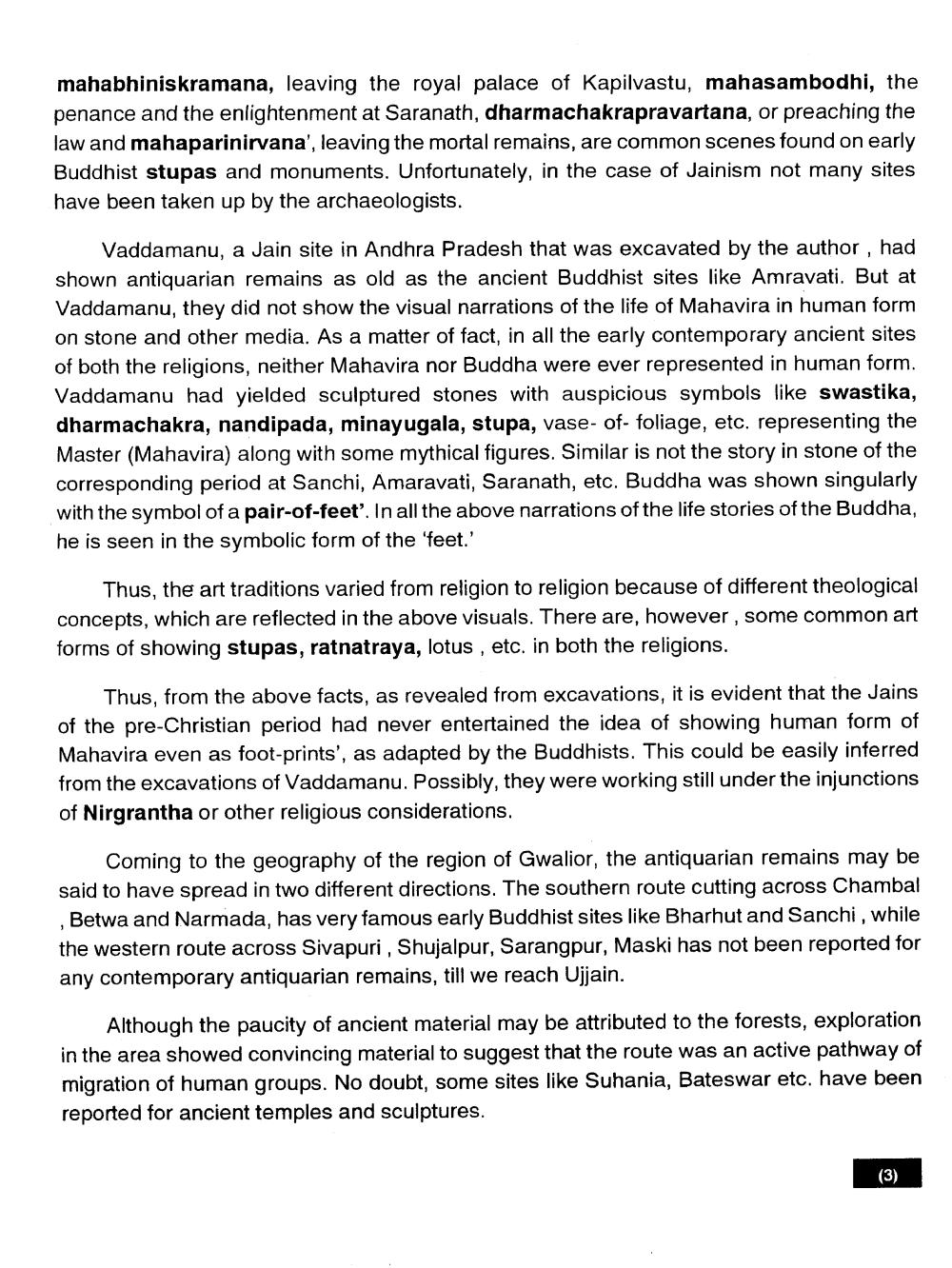________________
mahabhiniskramana, leaving the royal palace of Kapilvastu, mahasambodhi, the penance and the enlightenment at Saranath, dharmachakrapravartana, or preaching the law and mahaparinirvana', leaving the mortal remains, are common scenes found on early Buddhist stupas and monuments. Unfortunately, in the case of Jainism not many sites have been taken up by the archaeologists.
Vaddamanu, a Jain site in Andhra Pradesh that was excavated by the author , had shown antiquarian remains as old as the ancient Buddhist sites like Amravati. But at Vaddamanu, they did not show the visual narrations of the life of Mahavira in human form on stone and other media. As a matter of fact, in all the early contemporary ancient sites of both the religions, neither Mahavira nor Buddha were ever represented in human form. Vaddamanu had yielded sculptured stones with auspicious symbols like swastika, dharmachakra, nandipada, minayugala, stupa, vase-of- foliage, etc. representing the Master (Mahavira) along with some mythical figures. Similar is not the story in stone of the corresponding period at Sanchi, Amaravati, Saranath, etc. Buddha was shown singularly with the symbol of a pair-of-feet'. In all the above narrations of the life stories of the Buddha, he is seen in the symbolic form of the 'feet.'
Thus, the art traditions varied from religion to religion because of different theological concepts, which are reflected in the above visuals. There are, however, some common art forms of showing stupas, ratnatraya, lotus , etc. in both the religions.
Thus, from the above facts, as revealed from excavations, it is evident that the Jains of the pre-Christian period had never entertained the idea of showing human form of Mahavira even as foot-prints', as adapted by the Buddhists. This could be easily inferred from the excavations of Vaddamanu. Possibly, they were working still under the injunctions of Nirgrantha or other religious considerations.
Coming to the geography of the region of Gwalior, the antiquarian remains may be said to have spread in two different directions. The southern route cutting across Chambal , Betwa and Narmada, has very famous early Buddhist sites like Bharhut and Sanchi, while the western route across Sivapuri, Shujalpur, Sarangpur, Maski has not been reported for any contemporary antiquarian remains, till we reach Ujjain.
Although the paucity of ancient material may be attributed to the forests, exploration in the area showed convincing material to suggest that the route was an active pathway of migration of human groups. No doubt, some sites like Suhania, Bateswar etc. have been reported for ancient temples and sculptures.
(3)




